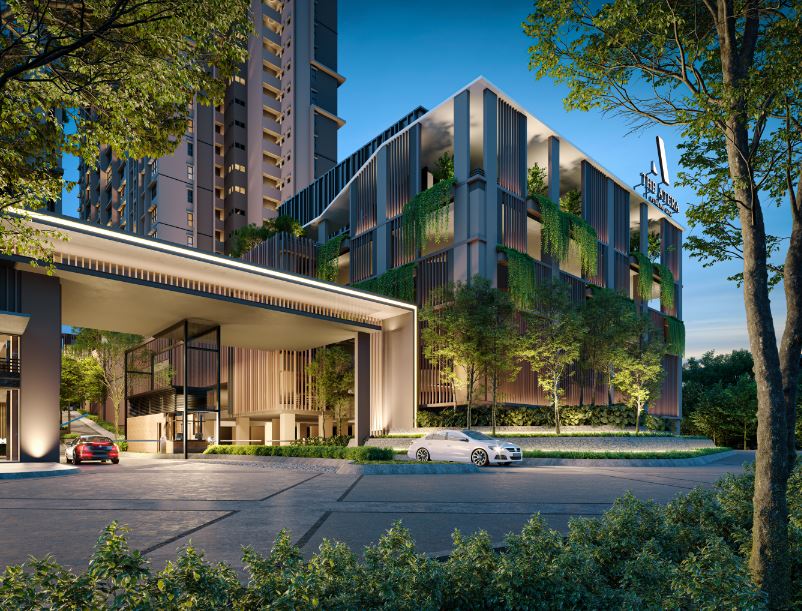An intricate web of market forces, government policies and unforeseen circumstances is the cause
By Joseph Wong
As with many other countries in the world, housing affordability always remains the hottest topic of discussion in Malaysia. As reported by a multitude of private and public agencies time and time again, houses nationwide are seriously unaffordable. At RM500,000, house prices are easily over six times the average Malaysian’s annual income and the gap is continuing to grow ever wider. According to online portal Instarem, Malaysia's average income for a full-time worker is RM 6,610 per month and RM 79,300 per year.
While various efforts have been put forward by the government to make homeownership more accessible, such as the building of one million affordable houses by PR1MA and other government and state agencies within the next 10 years and financial aid for first-time home buyers, the number of young working adults who have committed to buying a home is still relatively low. There is still a substantial number of completed but unsold units, coined as the overhang, in the market, due to its sensational impression.
But there is a silver lining. According to the National Property Information Centre's (Napic) Property Market Report 2023, the number of completed but unsold residential units fell 7% year-on-year (y-o-y) to 25,816 in 2023, versus 27,746 units in 2022.
The value of overhang residential units also declined 4% to RM17.68bil in 2023, from RM18.41bil a year earlier. Although challenges remain, the statistics released by Napic show a positive trend for the industry regarding the overhang. Additionally, the future supply appears more manageable, with year-on-year (y-o-y) declines in the construction of residential properties, serviced apartments, and small-office home-office (SoHo) units.
While Napic classifies overhang as completed housing units with CCC/Partial CCC that remained unsold for more than nine months after their completion, there are two other categories, namely unsold under construction and unsold not constructed. If the numbers of unsold units from these two categories were added to the total, then the amount would likely swell by threefold.
The real causes
And the real question arises - why did the overhang become such a huge number? Real Estate and Housing Developers’ Association (Rehda) president Datuk NK Tong helped shed some light on this overcast topic during a fireside chat withStarProperty.
Often, the primary cause cited for the residential property overhang is the development of mismatched products in terms of location and pricing that do not align with mass market demand, he said. However, this doesn't tell the whole story.
He pointed out that upon closer examination of the unsold residential property reveals that houses priced below RM300,000, at 29%, are the largest contributors to the overhang, followed by houses priced between RM300,000 and RM500,000 as well as RM500,000 and RM1mil. The smallest contributor to the tally of unsold but completed homes is actually those that are RM1mil and above, said Tong.
Examining why many of the affordable homes remain unsold reveals a few facts. Number one, they are built in the wrong locations where affordable homes are needed. Number two, the units are not to the specifications in demand. Number three, the buyers are financially constrained.
“Rehda, as an association for developers, we are fully behind the Malaysia Madani concept by the Prime Minister, in our case, subsidising affordable housing, which we have been doing for more than 40 years,” said Tong.
Malaysia’s cross-subsidy model requires developers to allocate at least 30% of their projects to affordable housing, he explained, pointing out that this percentage is often impractical. Some developments are located in remote areas without public transport or nearby industries. These conditions result in unsold units due to the mandatory affordable housing in unsuitable locations.
Additionally, the bumiputera release mechanism complicates matters, he said, adding that recently in one state, there was a proposal to introduce a release mechanism.
“The first year, they will release 20% of the unsold units, then 50% in the second year and progressively until the fifth year to release 100% but that ties up the capital for five years,” he said. Worse, he revealed that some states had no release mechanism. “So 15 years on, there are still unreleased lots,” he said.
On a more positive note, he said Malaysia’s housing regulations are quite robust. “We have visited countries like Australia, Hong Kong, Singapore and Korea for fact-finding missions. The challenge, however, lies in land being a state matter, subject to varying interpretations and implementations by state authorities,” he said.
Another issue is that land supply is the developer's responsibility, not the government's. Depending on the state, around 30% of the land must be developed as affordable housing, regardless of its suitability for the B40 group. Furthermore, this 30% mandate does not account for necessary amenities like roads, drainage as well as electricity and telecommunication infrastructure, which add to the overall cost.
Naturally, any loss incurred in building affordable housing has to be offset by the remaining units. This inadvertently raises the price of the units which were initially targeted at the intended target market. “Ä profit has to be made. Who would build housing for free?” he asked.
Tong said developers normally peg profit margins at 20% to account for any untoward incidents or unplanned new regulations that may be introduced by the state agencies at the final stages, whereby the authorities dangle the approval for Certificate of Completion and Compliance (CCC) in exchange for undertaking projects required by the local authorities such as a council-operated multi-storey carpark or repaving of access roads.
Tong added that making housing affordable is also dependent on the price of the house and how it is financed. Wouldn’t it be great if financial institutions also practised the Malaysia Madani concept and helped to subsidise 30% of their mortgages for affordable housing?
Just food for thought - financial institutions being the third party to a home purchase could come up with better financial packages for the B40 to help ensure that the million affordable homes are all sold and occupied.
How long will it take for the property glut to ease?
For the longest time, the overhang situation has cast a dark shadow over the Malaysian property market, creating the impression of rampant overbuilding. Market watchers have consistently raised concerns about the potential consequences as more residential and high-rise apartments, as well as serviced residences, come online.
In the residential segment, the total overhang has dropped by 30% from the peak of 36,863 units two years ago, while in terms of value, approximately RM5.1 billion worth of overhang has been cleared. However, the number of completed but unsold units will only decrease if there is a reduction in property supply in the coming years. Consequently, the housing market is expected to remain challenging as it will take more time to absorb the existing overhang before a meaningful recovery can occur.
In the meantime, the government needs to wisely monitor any implementation of new builds, to avoid the outgrowth of housing supply to the overall housing need in the country. At the same time, it also needs to relook into its policies which contradicts its goal of providing affordable homes to the Rakyat. Only by a cohesive collective effort can the nation greatly reduce, if not eliminate, the scourge of the property overhang.
Stay ahead of the crowd and enjoy fresh insights on real estate, property development, and lifestyle trends when you subscribe to our newsletter and follow us on social media.














































